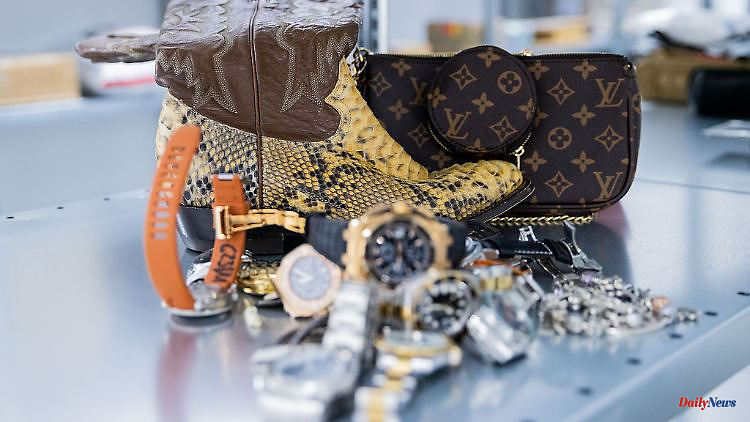Beautiful and good products have always been copied. But with a new youth culture, fake goods are becoming increasingly cool and, above all, accepted. Influencers are no longer even ashamed to promote them. Particularly brazen counterfeiters now receive a prize.
Fake Gucci caps and counterfeit Rolex watches: In the fight against product pirates, the Plagiarius campaign drew attention to a trend in social digital media. So-called "dupe influencers" recommend counterfeit designer and luxury products to their mostly young followers, the association criticized on Friday at the "Ambiente" consumer goods fair in Frankfurt. "They self-importantly legitimize the sale of infringing items and downplay the purchase as cool and acceptable."
As a result, the social acceptance of counterfeits increases and there is indifference to the economic damage caused to manufacturers and designers of counterfeit products. More than every third young European between the ages of 15 and 24 has intentionally bought counterfeit products. The campaign has been fighting product pirates with billions in global sales since 1977. Manufacturers and dealers of particularly brazen imitations are regularly denounced with the infamous "Plagiarius" prize - a dwarf with a golden nose. The information often comes from the original manufacturers, who have to agree to the award of the shameful price.
Customs raids regularly take place at the world's leading trade fair "Ambiente", during which the owners of the original rights have imitation products confiscated. However, the Internet has enabled much more complex and direct sales channels. The association criticizes that the manifestations of digital trademark infringements are becoming more and more diverse. "From classic plagiarism, forgeries and copyright violations to domain theft and trademark abuse to complete identity theft and fake shops." On the other hand, digital protection strategies are needed.
In 2023, the main abusive prize goes to a German furniture retailer who sold a replica of the "Link" wall shelf system, which originally came from the Hamburg design studio Hausen. Instead of certified solid wood from sustainable forestry, the plagiarists had used low-quality tropical mango wood and the cheap metal brackets were warped. According to Plagiarius, the dealer stopped selling after it became known and destroyed the remaining stock. Other victims of product piracy were the plastics manufacturer Koziol and the car manufacturers Mercedes-Benz and Volkswagen.
Swiss watches are often copied because they are in demand worldwide. Swiss watch exports reached a record value of 24.8 billion francs (about the same as euros) last year - an increase of 11.4 percent. A total of 15.8 million wristwatches were exported. In 2016 it was 25.4 million. Even then there were estimates that twice as much was counterfeited as exported, but no one knows the true figure.
Yves Bugmann, head of the FH legal department, knows that illegal business is also increasing as online trade grows. This got a boost during the pandemic, when even more people discovered online trading. The association's detectives discover around a million dubious offers every year, which are then taken off the Internet by the platform operators.
A classic among tourists is the Rolex for 20 or 30 dollars from the street market or beach in Asia. Buying something like this is not a trivial offense, says Eveline Capol, head of the Swiss association Stop Piracy. "You support organized crime." The association wants to sensitize consumers. Many would think twice when they learned that counterfeit goods were being manufactured under the worst possible conditions. Child labor cannot be ruled out.
The industrialized nations organization OECD has calculated that Swiss watch and jewelry manufacturers will lose billions in 2021 due to counterfeiting. Already in 2018 they lost 1.7 billion euros. The EU estimates that counterfeit products - including clothing, tools and medicines - make up almost seven percent of its imports: "They are a significant source of income for criminal organizations."












